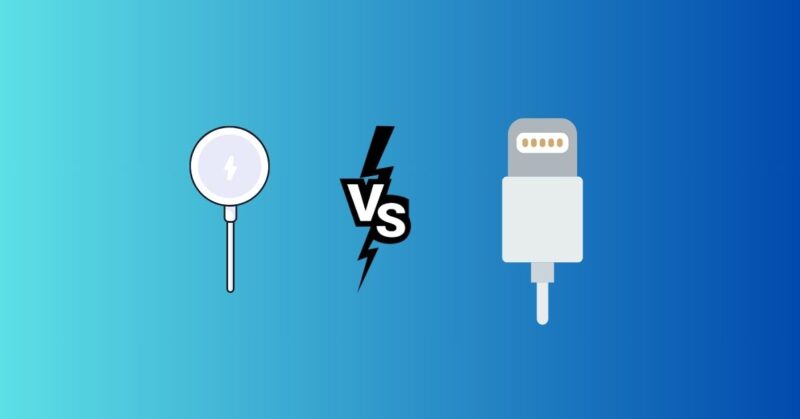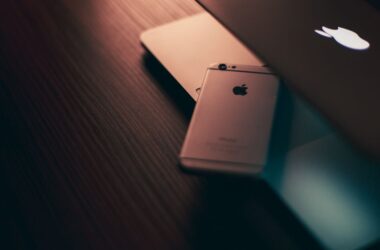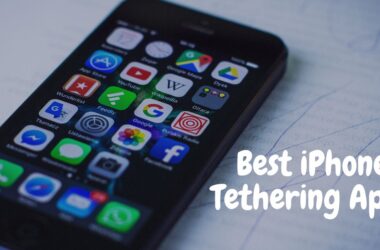Apple has always been at the forefront of innovation, and when it comes to charging technology, they’ve given us two major options over the years—MagSafe and Lightning. While both have their own advantages, many iPhone users still wonder: which one is better? Whether you’re looking for faster charging, convenience, or long-term compatibility, this guide will break down everything you need to know about MagSafe vs Lightning.
Note: If you are getting an iPhone 15, then a MagSafe charger is your option.
The Evolution of iPhone Charging: MagSafe vs Lightning
What is MagSafe?
MagSafe is Apple’s magnetic wireless charging technology introduced with the iPhone 12 series. It uses built-in magnets to align perfectly with compatible chargers, ensuring efficient power transfer. It delivers up to 15W of power when used with an official MagSafe charger.
What is Lightning?
Lightning is Apple’s proprietary charging cable introduced in 2012 with the iPhone 5. It replaced the 30-pin connector and became the standard for iPhones, iPads, and accessories. It supports fast charging when paired with a 20W+ power adapter, providing a reliable and wired charging experience.
Charging Speed Comparison
One of the key factors in choosing a charging method is speed.
- MagSafe can charge an iPhone 50% in about 30-35 minutes but maxes out at 15W (12W for iPhone Mini models).
- Lightning with a 20W adapter can charge an iPhone 50% in just 25-30 minutes, making it slightly faster for quick top-ups.
If you prioritize speed, Lightning still holds the edge over MagSafe.
Convenience and Usability
MagSafe: A Seamless Wireless Experience
- No cables required—just snap the charger onto the back of your iPhone.
- Perfect for nightstands or desks where you want to avoid cable clutter.
- Also compatible with MagSafe accessories like wallets, battery packs, and car mounts.
Lightning: Reliable & Versatile
- Works with existing Apple accessories like EarPods and older iPhones.
- No alignment issues—just plug and charge.
- Faster data transfer speeds (which MagSafe lacks).
Winner? If you want hassle-free, wireless charging, go with MagSafe. But for reliability and data transfer, Lightning still reigns supreme.
Device Compatibility & Future-Proofing
Apple has already moved away from Lightning in its iPhone 15 series, switching to USB-C due to EU regulations.
- MagSafe is expected to remain part of Apple’s ecosystem for years to come, making it a more future-proof option.
- Lightning, while still widely used, is slowly being phased out, meaning future Apple products may not support it.
Impact on Battery Health
One of the biggest concerns with charging methods is battery health.
- MagSafe generates more heat, which can lead to long-term battery degradation.
- Lightning, especially with a 20W adapter, remains cooler, preserving battery longevity better.
- Tip: If using MagSafe, avoid charging overnight to reduce excessive heat exposure.
Heat Generation & Power Efficiency
Heat affects battery life, and MagSafe produces more heat than wired charging due to energy loss in wireless power transfer.
- MagSafe has higher power loss (~30%), which means it consumes more electricity.
- Lightning is more energy-efficient, using nearly all the supplied power to charge the battery.
Price & Cost Considerations
- MagSafe chargers are more expensive, typically $39-$50+ for Apple’s official models.
- Lightning cables are more affordable, with official Apple cables starting at $19.
- Third-party options exist for both, but certified Lightning cables (MFi) tend to be cheaper than MagSafe chargers.
Which One Should You Choose between the Magsafe and Lightning charging case?
| Feature | MagSafe | Lightning Charger |
|---|---|---|
| Charging Speed | Moderate (15W) | Faster (20W+) |
| Convenience | Wireless, Snap-on | Wired, Reliable |
| Battery Health | More heat (potential impact) | Less heat, better long-term |
| Future-Proof | Likely to remain | Being phased out (USB-C) |
| Data Transfer | No data transfer | Yes, supports syncing |
| Cost | Expensive | More affordable |
Choose MagSafe if…
✅ You want a cable-free experience. ✅ You love using MagSafe accessories. ✅ You don’t mind slightly slower charging.
Choose Lightning if…
✅ You prioritize faster charging and efficiency. ✅ You need data transfer capabilities. ✅ You want a more budget-friendly solution.
Conclusion
Both MagSafe and Lightning have their own strengths and weaknesses. While Lightning remains a strong wired option, MagSafe is paving the way for a wireless, future-proof Apple ecosystem. Depending on your needs, one may be better suited for you than the other. What’s your pick?
FAQs
Is MagSafe charging better than Lightning?
Yes, given the current circumstances of Apple shifting to Type-C, it’s better to go for MagSafe Charger.
Is MagSafe better for battery health?
It depends on how users manage their charging practices. However, it uses more watts which might affect your electricity bill.
Can you charge with MagSafe and Lightning at the same time?
As per Apple, your iPhone will charge from Lightning Cable.
Does the MagSafe Charger stop charging at 100%?
Yes, it does stop the charging when your iPhone’s battery level reaches 100%.
Is it better to charge an iPhone with Magsafe or a lightning cable?
To charge your iPhone quickly, go for the Lightning Cable. If you want easy, tangle-free charging, MagSafe is your go-to choice.








